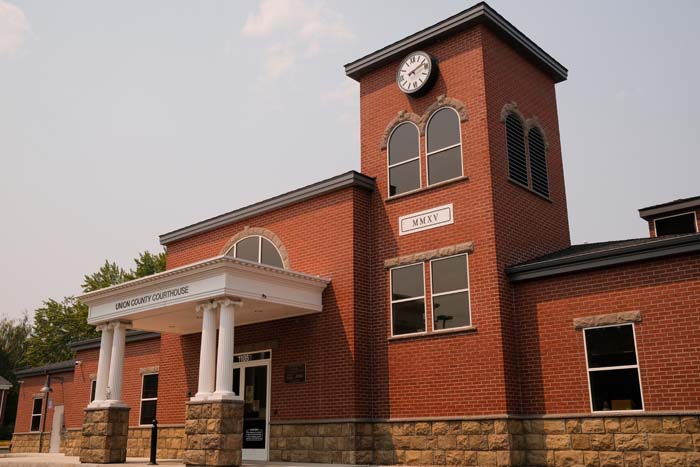Opioid crisis real in rural Oregon
Published 10:25 am Friday, September 13, 2019
The numbers provide reason for both hope and alarm.
Trending
They are the statistics presented Wednesday night at a community forum in La Grande on opioid abuse, conducted by the Oregon Washington Health Network. They indicate that the Centers for Disease Control and Prevention projects that deaths from opioid overdoses in this state will rise 6.5% this year and again in 2020. This is the highest forecast increase among a region of eight western states: Oregon, Washington, California, Arizona, Idaho, Montana, Nevada and Utah.
One reason is that the services available to help people in Oregon cope with opioid addictions are not as widespread as they are in many other states, said Mike Stensrud of the Oregon Washington Health Network. For example, the availability of psychiatrists in many parts of the state is far less than in other states. Psychiatrists, Stensrud said, can be very important in helping people with mental illness overcome addictions.
On the bright side, the number of opioids being prescribed to Oregonians has been falling since 2015, Stensrud said. He credits this to two state programs. One is a Prescription Drug Monitoring Program that provides pharmacists with the tools needed to track what types of drugs patients are getting at other pharmacies. Should a druggist discover that someone is receiving opioid prescriptions from multiple physicians, the pharmacist must notify the patient’s doctors so that corrective action can be taken.
Trending
A second program, Oregon’s Prescription Drug Medication Program, is also helping to reduce opioid prescriptions. Through it the state advises doctors on which ailments opioid painkillers should or should not be prescribed for. Conditions physicians are discouraged from prescribing opioids for include long-term chronic problems like lower-back pain. The reason is that someone on opioids for a long duration is more likely to develop an addiction, Stensrud said.
Guidelines for opioid prescriptions are developed by a consortium of doctors and then distributed to Oregon physicians by the Oregon Health Authority.
Wednesday’s forum was conducted not only to provide information about the status of the opioid crisis in the Northwest but also to provide information on the Oregon Washington Health Network and the services it offers. The network, headquartered in Pendleton, serves Union, Umatilla and Morrow counties in this state and Walla Walla County in Washington.
Organizations that are part of the network are the Yellowhawk Tribal Health Center (which provides health care to the members of the Confederated Tribes of the Umatilla Indian Reservation), St. Anthony Hospital in Pendleton, Providence St. Mary Medical Center in Walla Walla, the Morrow County Public Health Department, the Umatilla County Public Health Department, Blue Mountain Community College, Lifeways (originally known as Malheur County Mental Health), the Walla Walla County Public Health Department and Good Shepherd Hospital of Hermiston.
Organizations in Union County the Oregon Washington Health Network works closely with include the Northeast Oregon Network.
One of the focuses of the Oregon Washington Health Network’s staff is to begin providing drug addiction treatment services to patients while they are hospitalized. Patients are more receptive to entering treatment programs while they are hospitalized, said Dan Peterson, manager of the Oregon Washington Health Network, whose main office is in Pendleton.
“It is important that a treatment plan for them be developed within 72 hours (of entering a hospital),” Peterson said.
One reason for this, Peterson said, is that once out of a hospital patients without a treatment plan begin thinking incorrectly that they can control their drug addiction problem on their own.
Peterson said that opioid addictions hit everyone, at all socioeconomic levels. He noted that he has seen nurses, teachers and farmers who have become addicted to opioids.
“Opioid addictions do not discriminate,” he said.
However, where a person lives can effect the likelihood of the opioid addiction leading to death. Peterson noted that while an average of 30 Oregonians die every 10 days of opioid overdoses, 15 of these individuals are from rural Oregon, even though just 20% of the state’s population lives in rural areas. Peterson said the reason rural Oregonians are more at risk is they do not have access to the health care services that those in urban areas do.
One way Peterson hopes to boost the availability of health care services to drug addicts in this region is to establish a crisis center in Pendleton, one which would be open round the clock. The crisis center would allow the Oregon Washington Health Network to provide shelter for drug addicts who are homeless for at least 24 hours while a treatment program is set up for them.
Peterson said there is more of a need for a crisis center in Pendleton than places like La Grande because it has more homeless people, in part because it is the home of the Eastern Oregon Correctional Institution. Many former inmates, some of whom are drug addicts, find themselves homeless in Pendleton after being released. The center would also be available for people from other counties, including Union County.
“(A crisis center) is our greatest need,” Peterson said.









